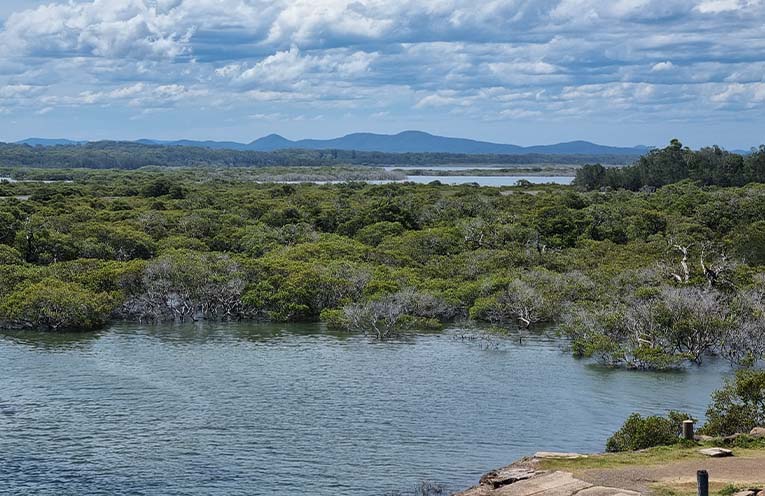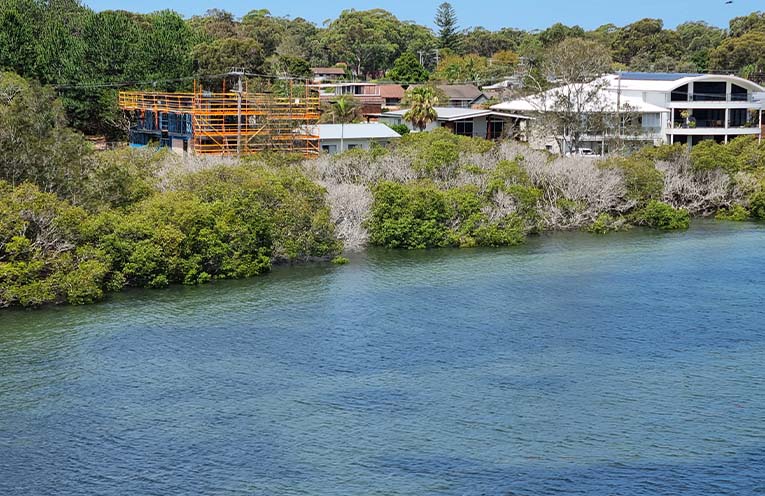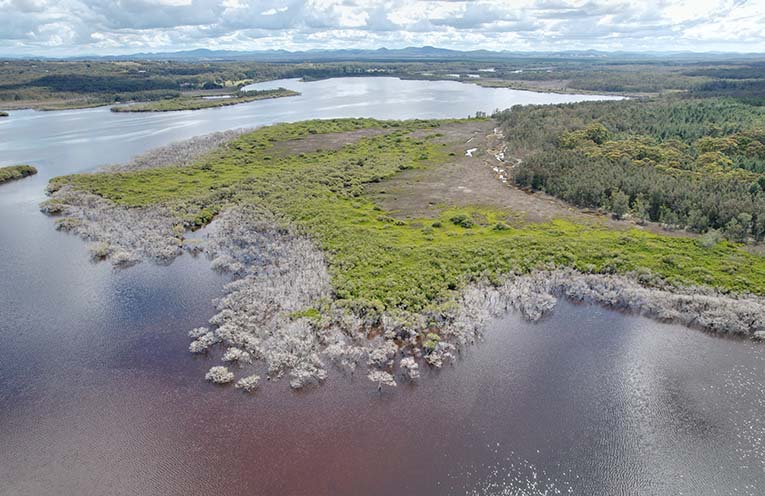
MAJOR rainfall and significant sand-silting have combined to cause ugly mangrove deaths along the Myall River, according to local interest groups.
“The major storm in April 2022 saw water-levels at Bombah Point rise by up to three metres,” Chris Taylor, a local with over a decade of experience in water supply and management projects, told NOTA.
 Advertise with News of The Area today.
Advertise with News of The Area today.It’s worth it for your business.
Message us.
Phone us – (02) 4981 8882.
Email us – media@newsofthearea.com.au
“The subsequent vast quantities of runoff flowing down the Myall River in mid-2022 carried massive amounts of sediment, and when fast-flowing water encounters tidal flows in the lower areas of the river near Port Stephens, it slows down, shedding its sediment load,” Mr Taylor explained the dynamics of the Myall system.
The Australian Institute of Marine Science indicates that “mangroves do grow best in water that is 50 percent freshwater and 50 percent seawater”.
The influx of excessive freshwater from upriver, combined with the well-documented lack of new oceanic water coming in from Port Stephens, means that the Myall River system is suffering from extremely low salinity, and the dying mangroves are likely visible evidence of this.
“This supports the case for substantial dredging of the lower Myall River to remove excess sediments that are smothering the roots of mangroves, and increase saline tidal flows in the estuary,” Mr Taylor explained.
“Local tourism operators are concerned by mangrove dieback in the lower Myall River as visitors may gain an incorrect impression that the dieback is being caused by pollution in the river and estuary and that the aquatic environment is contaminated.”
Grey and dying mangroves are already visible along Hawks Nest, Swan Bay and further up-river.
The NSW Department of Primary Industries’ Port Stephens Fisheries Institute located at Taylors Beach on Port Stephens conducts intensive research into mangroves in NSW.
Information on mangrove dieback and mangroves’ vital roles in bank stabilisation and providing habitat for juvenile marine species can be provided by ringing the Institute on 4916 3900 or by email at www.dpi.nsw.gov.au.
By Thomas O’KEEFE


